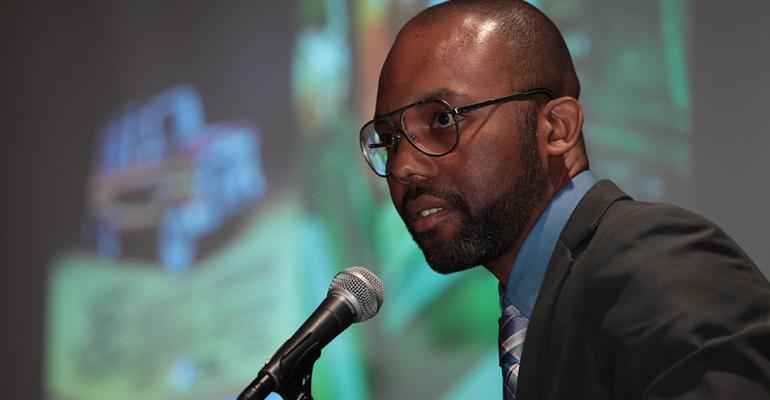DEARBORN, MI – When industry design leaders talk about the future of luxury, they use words such as emotional, authentic and sustainable, a panel of experts on the topic say.
“No longer is luxury defined by brand or price,” says Robert Walker, chief designer-Jeep Brand Interiors at Fiat Chrysler Automobiles.
Speaking Wednesday at the 2014 WardsAuto Interiors Conference here, Walker says there is a great mixing of luxury today with everyday volume cars, trucks and CUVs receiving premium pieces.
The Chrysler 200, for example, uses open-pore wood inserts to the dashboard and door panels, an execution exclusive just a few years ago to only the upper-luxury brands.
“The key today is people want more,” he adds. “They want their experiences to be genuine with an emotional connection.”
Few brands can deliver on that notion better than Jeep, which boasts a unique link between human and machine through off-road adventures, Walker says. Off-roading itself has become a luxury, because it includes two of luxury’s most coveted elements: time and place.
“The physical experience is a given,” he says. “Luxury comes with the owner’s emotional experience.”
Naturalism will be part of the future of interior luxury, says Pat Murray, owner of Murray Design.
“You have to have wood, you have to have grained leather and you have to have shiny bits,” he says. But luxury automakers also must deliver on authentic aesthetics such as craftsmanship.
“That is consistent globally,” Murray says, adding, “Even when it is not handcrafted, we talk about it being handcrafted.”
Luxury automakers today must not overlook the “craft” in handcrafted. Makers of all premium goods are looking to the crafts of a particular region and adding those elements to heighten the uniqueness and desirability of their product.
“Those car companies that are doing well in the luxury segment are embracing and trying to understand the local arts and crafts community, or what locally motivates their customers,” Murray says. He points to a Rolls-Royce Ghost edition selling in China this year with trim pieces acknowledging the country’s woodcarving history and the 2014 zodiac of the wooden horse.
Olivier Boinais, senior manager-Industrial Design at Faurecia, says a luxury vehicle should stimulate each of the five senses and increase a person’s health and well-being.
Boinais draws the parallel of a gourmet meal. “It is the total sensory experience. In the car we can control a lot of the sensory inputs. We can design for them,” he says, citing active noise cancellation.
Faurecia is designing for the sensory experience through ideas such as adding bio-sensors to seats so passengers leave the vehicles refreshed, and “air cocoons” surrounding a passenger so comfortable temperatures are reached more quickly.
“We want to connect with people emotionally, so we push beyond brand loyalty to brand advocacy,” Boinais says.
Luxury these days also must involve a form of sustainability. Not unlike vacationers who like to give back to the communities they visit, luxury-vehicle buyers like to know their purchase did not come at the sacrifice of others.
One emerging trend is wood harvested from lakes, or leather from ethically raised animals.
“In the foreseeable future we will still see wood and leather,” Walker says. “The way it is obtained and accepted will change, such as imperfect wood but wood with a story behind it. It will get back to its natural state, hopefully, instead of needing 10 layers of polyurethane.”





